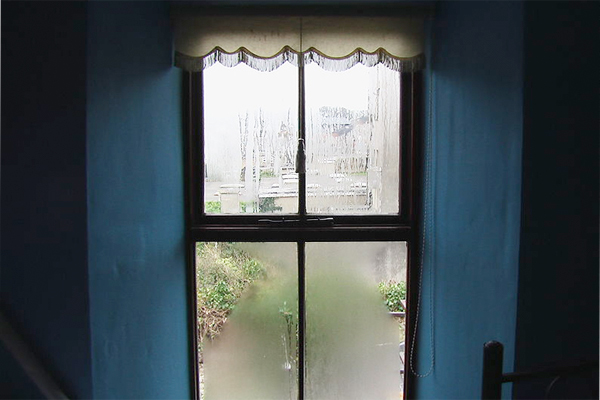Household humidity: Too little of it and you’ll zap your dog with an arcing blue spark when you touch his nose; too much and your carpet starts sprouting mushrooms. A hygrometer will measure humidity so that you can assess your needs and choose from many tools to control your home’s humidity.
Size Up Your Personal Discomfort Level
Your own discomfort is the first clue to an improper humidity level. Here are symptoms to watch for:
Low humidity:
- Dry skin, chapped lips
- Static cling; sparks zap your fingertips when you touch metal or damp objects
- Irritated nose and throat
High humidity:
- Clammy feeling, especially when wearing synthetic materials
- Musty smells
- Allergic reactions, such as sneezing, itchy eyes, and chronic coughing
Look for Your House’s Symptoms
The moisture level in the air doesn’t only directly affect humans; it can also cause problems for your house and indirectly affect you. Here are signs to look for:
Low humidity:
- Dust buildup
- Dried-out, loose furniture joints
- Separation at joints of moldings, such as baseboards and crown moldings
- Squeaky floors and stairs
High humidity:
- Condensation on the inside of windows
- Mold on walls and ceilings
- Insect infestations
How to Check Your Household Humidity
A simple instrument called a hygrometer measures the amount of water in the air in terms of relative humidity. Choose from mechanical hygrometers ($5 to $35) or electronic types ($8 to $25). Locate your hygrometer in a living area away from the moisture produced by the kitchen or a bathroom.
For maximum heating effectiveness and comfort, humidity levels should be between 30% and 50%. In the summer, a maximum of 55% is tolerable. Anything under 30% or over 60% will be uncomfortable and potentially damage your home.
Countering Dry Air
Overly dry air has a chilling effect because it boosts the cooling power of normal perspiration. Get your humidity level right and you can dial down the thermostat a few degrees and feel just as warm. You’ll boost your heating energy efficiency by 1% for every degree you dial down — a sizable savings over the course of the winter.
Options for increasing humidity include:
- Use a portable humidifier to boost the comfort in a living area or bedroom. Cost: $27 to $181.
- Add a whole-house humidifier to your furnace. It comes with a built-in humidistat that automatically cues the unit to produce the right amount of moisture. Some systems include an outdoor sensor that factors in air temperature. Steam versions are the most effective. Cost: $600 to $1,200, installed.
- Weatherproof windows and doors to cut air leaks that bleed humidity. Cost: $18 to $82 per window.
Dealing With Too Much Humidity
If you live somewhere with hot, humid summers, central air conditioning can help control humidity. AC systems remove excess water as they cool air.
However, homes that have basements, below-grade living areas, or are located in coastal regions may encounter high humidity problems year-round. Here are options for reining in the damp:
- Buy a portable dehumidifier to cope with isolated dampness. Cost: $190 to $350.
- Equip your bathroom with a vent fan. Cost: $25 to $100; $235 to $527 with an energy-saving heat exchanger.
- Increase your anti-moisture power by installing a dehumidifier in your HVAC system. Automatic sensors detect humidity levels in the air and adjust accordingly. Cost: $2,000 to $3,000, installed.
High Humidity in New Construction
Newer homes in high humidity areas are especially susceptible to excess interior moisture because they’re tightly built: Air leaks are rare. However, that efficiency can cause humidity buildup.
To counteract, add a heat recovery ventilator to your HVAC system. It refreshes interior air and removes humidity without loss of heat. Cost: $3,500 on new construction; $4,500 for a retrofit.
Good Exterior Maintenance: A Line of Defense
Be sure to prevent excess moisture from getting inside your home:
- Check flashing around windows and doors.
- Repair leaky gutters and downspouts.
- Use downspout extenders to keep water away from the foundation.
- Make sure window wells are covered so they don’t accumulate rainwater.
